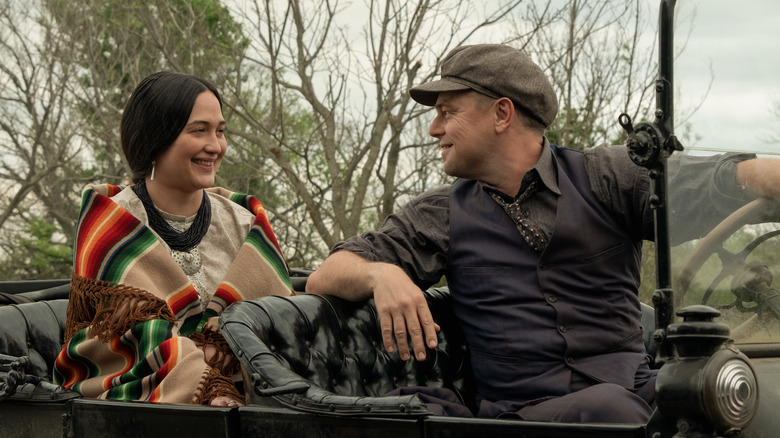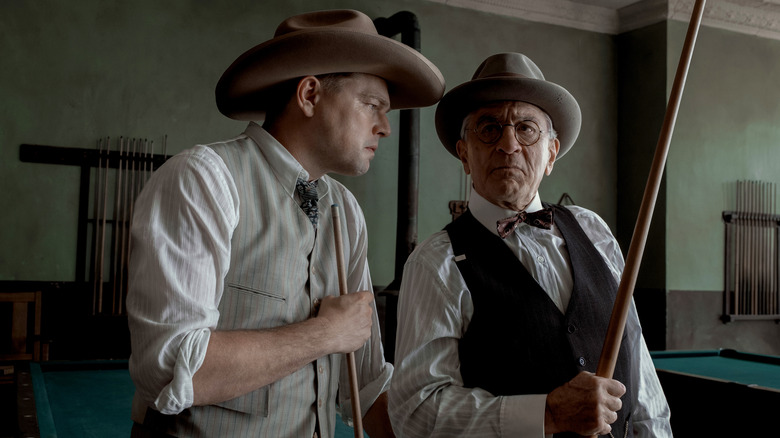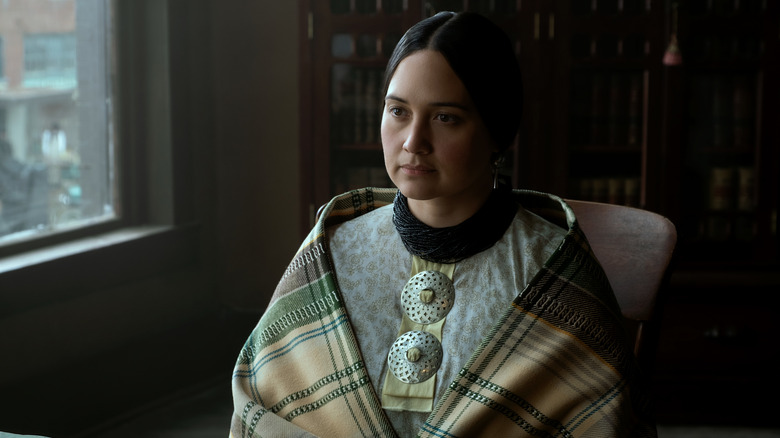Killers Of The Flower Moon Review: Quiet Rage Fuels Scorsese's Latest Historical Epic
- Strong performances from Lily Gladstone, Leonardo DiCaprio, and Robert De Niro
- Has an urgency that makes it feel shorter than it is
- Could benefit from featuring Lily Gladstone's Mollie more
Sprawling yet intimate in scope, "Killers of the Flower Moon" is the latest historical epic from Martin Scorsese. It's one of the legendary filmmaker's most thoughtful and introspective pieces, at once tackling a largely forgotten true-crime story and grappling with why it was allowed to be forgotten in the first place. Among other things, "Killers of the Flower Moon" proves that both Leonardo DiCaprio and Robert De Niro do their best work with him, as they turn in compelling performances that fully capitalize on their unique talents. Bolstered by the enthralling and deeply empathetic Lily Gladstone in the central role of Mollie, the film is a quietly impactful slow burn that reaches a crescendo as it approaches its dark and melancholy conclusion.
In Osage County, Oklahoma, in the early 20th century, oil was discovered on Osage Indian land, and it changed their community forever. Suddenly endowed with great wealth — although, paradoxically, by law, they were considered "incompetent" and required the approval of their appointed white "guardian" to access their funds — the Osage became the victims of a murder spree designed to steal their inheritance. At the heart of this vast conspiracy (at least within the narrative of "Killers of the Flower Moon") is Ernest Burkhart (DiCaprio), a World War I veteran who has returned to Oklahoma to work for his uncle, William King Hale (De Niro). When he begins driving a wealthy Osage woman around and the two begin to connect, Hale smells an opportunity. If Ernest marries Mollie (Gladstone), and Hale systematically wipes out the rest of her family, they would stand to inherit her headrights to a vast oil fortune. It's not a thought that most people would have, who would consider it too ghoulish to even consider, but Hale's not most people.
Love and destruction
Despite the fact that "Killers of the Flower Moon" has a fairly substantial runtime, clocking in at just under three and a half hours, it somehow feels light on its feet. Thelma Schoonmaker's editing makes the production feel measured and methodical, but never sluggish — no mean feat, considering how unwieldy such an epic production could be. Martin Scorsese makes a number of interesting visual choices, particularly in his use of newsreel footage and the epilogue's radio play. This not only grounds the events of the film in history but reminds audiences of our role as spectators, and highlights the contradictory responsibility of "Killers of the Flower Moon" to bear witness to the Osage Indian murders while also providing entertainment. Scorsese also includes references to the Tulsa Race Massacre of 1921, which occupies the same historical space as the Osage murders. The fact that they're mentioned in the film is no coincidence — in both instances, people of color are able to accumulate wealth, and white interlopers are willing to tear down their communities in order to steal that wealth for themselves — and it speaks to Scorsese's perspective in telling this story.
While Scorsese's unparalleled vision is on display throughout "Killers of the Flower Moon," it's the three lead performances that give it so much of its emotional resonance. Leonardo DiCaprio is interestingly placed in a role that strips him of his charisma, as Ernest is little more than a weak-willed henchman who is greedy and easily manipulated by his uncle. He has affection for his wife Mollie, in his own perverse way, but it's not enough to prevent him from going along with Hale's plans, even poisoning her insulin to purposefully make her ill. This speaks to the inherent contradiction in both Ernest and Hale: How can they claim to love something when they're willing to destroy it? Ernest will hurt, even kill, Mollie as a means to an end, and Hale sees no problem in tearing down the Osage community — which he professes great love and admiration for — if it will further his bottom line. This dichotomy is where Robert De Niro shines in the role. There's a steely menace to his character cloaked in genteel, grandfatherly warmth, and his long-standing presence in Osage County helps to hide his more insidious qualities. It's incredibly satisfying to watch De Niro still have the opportunity to take on roles like this that really let him showcase his talents.
The incomparable Lily Gladstone
And then there's Lily Gladstone who, as Mollie, has the entire film revolving around her. She is the victim at the center of every nefarious plot, because it's her wealth that they conspire to steal, and her family that they seek to destroy. If there's any justice in the world, this film will open up a host of new opportunities for Gladstone, because she is captivating in this role. Her performance is a masterclass in restraint — she does so much with a look, a polite smile, a few words. It's a shame that the narrative doesn't give her more to do, rather than focusing on the white villains of the piece, since she steals the scene every time she's on screen.
It's clear that Martin Scorsese put a lot of effort into making sure that "Killers of the Flower Moon" was respectful to the Osage community, and as much as it is possible for a white male director to tell the story of an Indigenous woman whose life was torn apart by colonist greed, he does so with grace and sensitivity. Gladstone is the heart and soul of the film, while Leonardo DiCaprio and Robert De Niro are at the top of their game as its unassuming villains. It's not as flashy as some of Scorsese's other films, with fewer expansive set pieces than we often see, but it has a soulfulness and quiet power that makes it one of his very best.
"Killers of the Flower Moon" premieres in theaters and on Apple TV+ on October 20.


